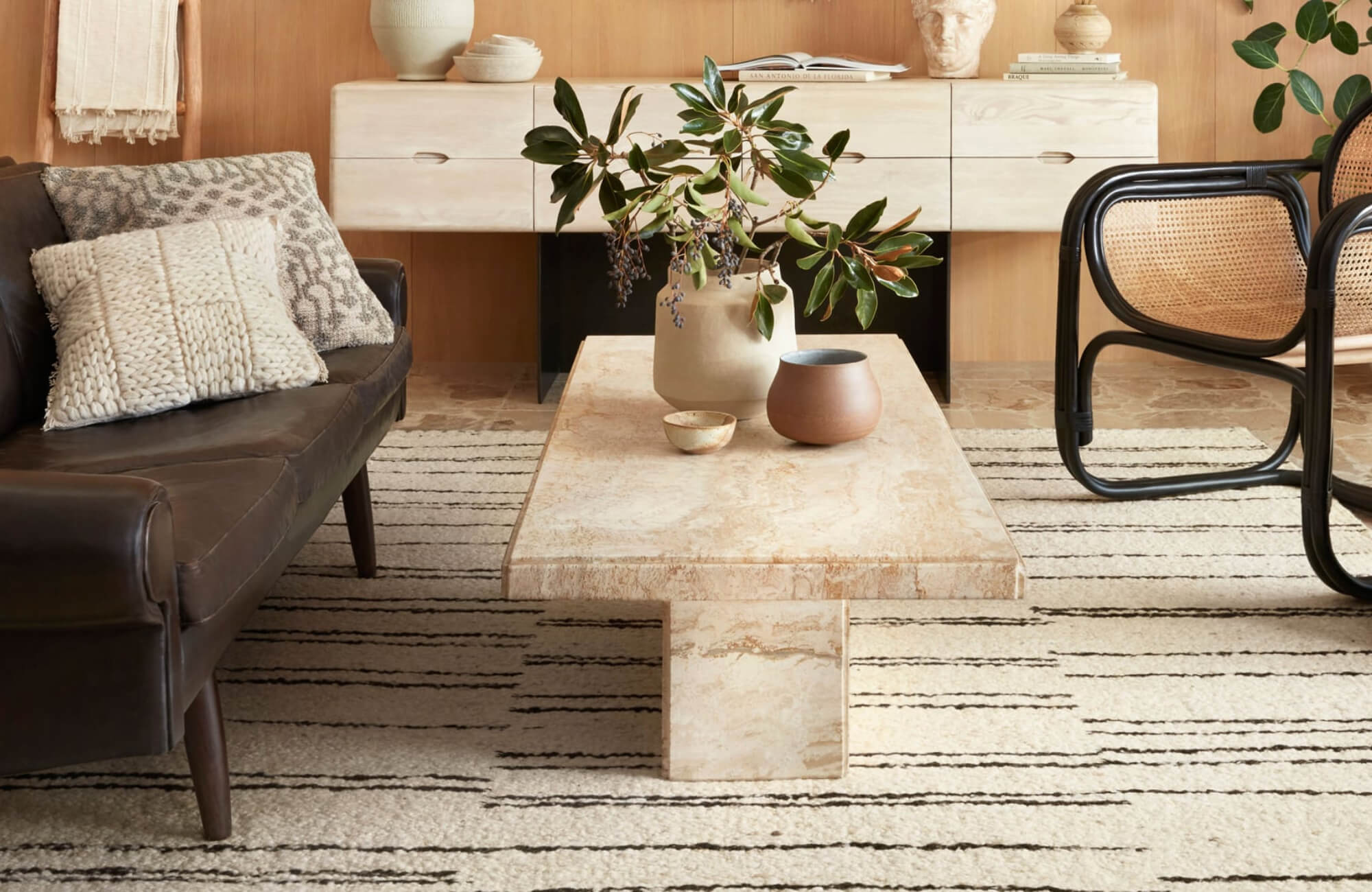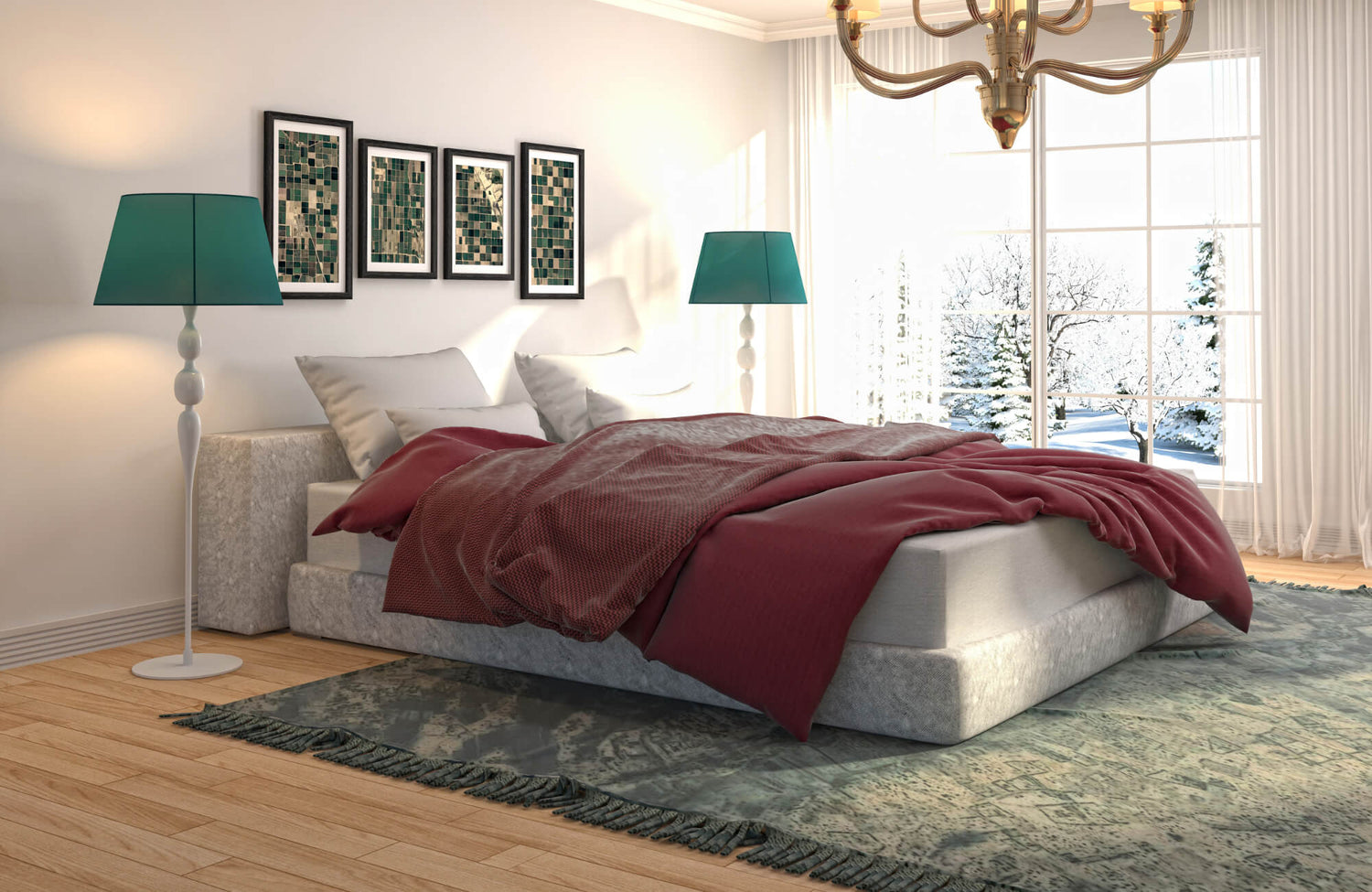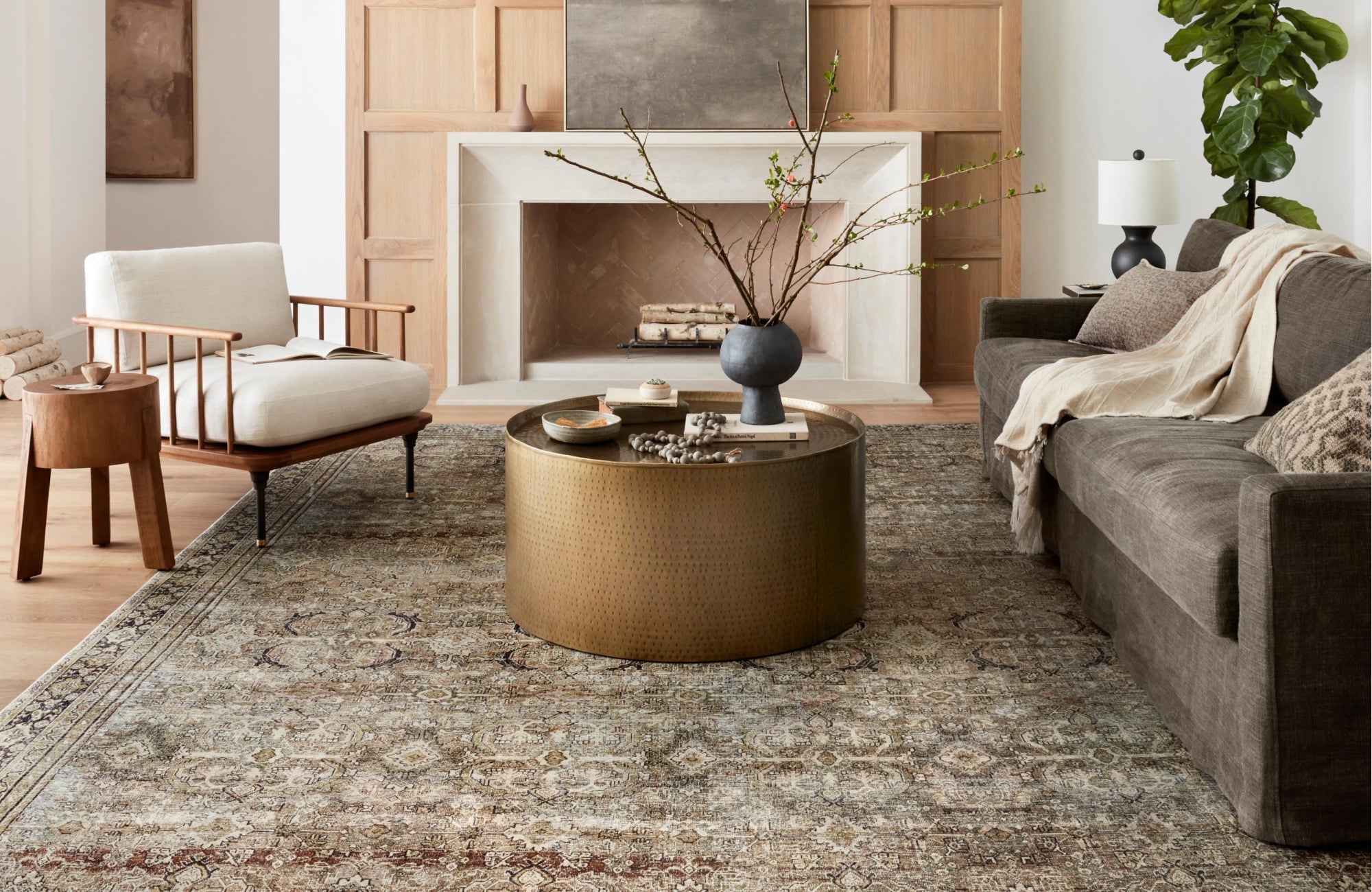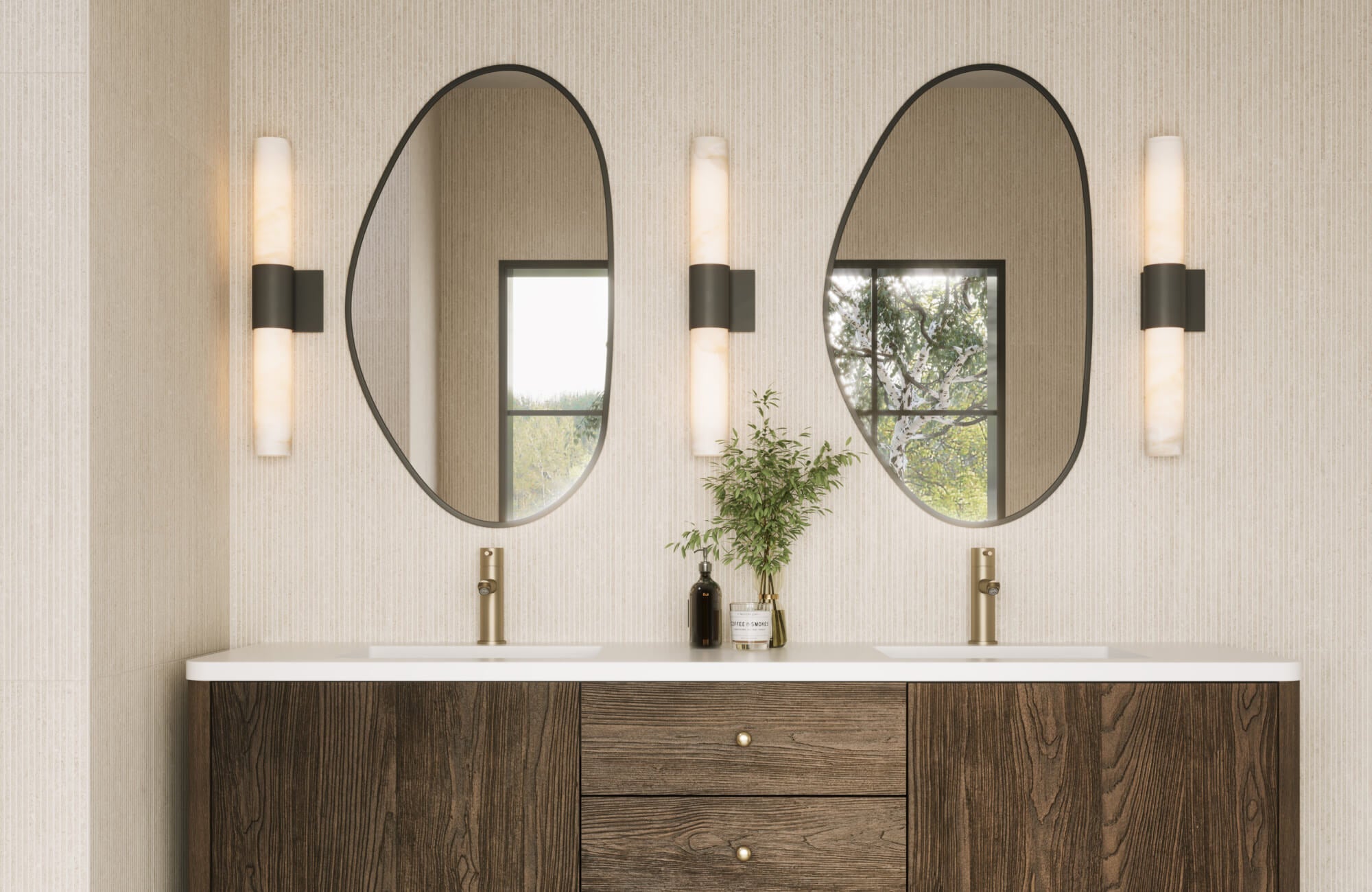In modern interiors defined by open plans, clean lines, and multifunctional zones, contemporary rugs have emerged as more than just floor coverings; they are pivotal design instruments. Through the confident use of form, color, and texture, these rugs seamlessly tie architectural elements together while lending definition and warmth to fluid spaces.
Notably, whether they’re used to delineate living zones, soften industrial edges, or inject a curated burst of color, today’s rugs reflect a thoughtful balance of material innovation and expressive design. Throughout this blog, we’ll explore how contemporary rugs shape modern decor through intentional styling, spatial clarity, and technical sophistication, highlighting their role as both practical solutions and design statements.

The Evolution of Contemporary Rugs
To understand how contemporary rugs have become integral to modern interiors, it's essential to look at how both their design language and construction methods have evolved. From reimagined aesthetics to advanced materials, these changes reflect a broader shift in how we define style, function, and sustainability in home design.
From Traditional to Transformative
Traditionally, rugs such as Persian medallions, Ottoman florals, or Tibetan mandalas were rich in cultural symbolism, featuring symmetrical motifs, ornate borders, and region-specific color palettes. These designs served not just as décor, but as visual storytelling grounded in heritage.
By contrast, contemporary rugs embrace abstraction, minimalism, and spatial harmony, aligning more closely with late 20th- and 21st-century architectural values. This shift underscores a larger design movement toward visual clarity and purposeful restraint.
Further reinforcing this evolution is the modernist principle of form follows function. Rather than simply framing a room, as traditional rugs did, today’s rugs enhance open-plan layouts through asymmetrical patterns, negative space, and color blocking. They frequently mirror architectural lines, such as those in furniture, staircases, or windows, to strengthen spatial cohesion.
Complementing these formal innovations is a progressive use of color. While traditional palettes leaned on natural dyes and earthy tones, modern designs embrace a wider, more versatile range. Neutrals like greige and charcoal bring quiet sophistication to minimalist interiors, while bold duotones and jewel tones add energy and dimension to more expressive environments. In either case, the rug contributes to a balanced and immersive spatial experience.
Material Matters
Just as visual language has advanced, so too have the materials and construction techniques behind contemporary rugs. While hand-knotted wool and silk pieces still define the high end of the market, today’s broader offerings increasingly incorporate hybrid fibers and updated methods aimed at performance and sustainability.
Notably, textural innovation is a driving force in this evolution. Techniques such as cut-and-loop pile, high-low shearing, and multidimensional tufting not only add tactile interest but also enhance comfort and acoustic insulation, particularly beneficial in busy, open-concept spaces. A prime example, as illustrated in the image above, is Edward Martin’s Davies Wool & Nylon Rug in Ash / Sand, which blends fibers and tonal contrast to achieve both softness and long-term durability.
Moreover, the rise of eco-conscious design has elevated the importance of sustainable materials. PET yarns made from recycled plastic, bamboo silk, and organic cotton have become common in responsible collections. Accompanying certifications like OEKO-TEX®, GoodWeave®, and GOTS assure ethical production practices, while innovations such as waterless dyeing and closed-loop manufacturing processes help reduce environmental impact.
Finally, modular rug systems, made up of interchangeable tiles or panels, represent a practical response to modern needs. They offer flexibility, simplified maintenance, and reduced material waste, catering to consumers who value design adaptability without compromising on aesthetics or sustainability.

How Contemporary Rugs Zone Modern Interiors
In open-concept layouts where walls are few and functions often overlap, rugs have taken on the important role of shaping how a space feels and flows. By doing more than just filling the floor, they help organize, connect, and highlight different elements within a room with intention and style.
Grounding Furniture Arrangements
At its core, one of the most essential roles of a contemporary rug is to anchor furniture groupings. Rugs visually establish the boundaries of seating areas, dining zones, or bedroom layouts, bringing structure to open spaces. Designers often apply the “floating furniture” principle, placing furniture partially or entirely on the rug to create cohesion and balance.
Furthermore, proportion is key. A rug that's too small can make a space feel disjointed, while one that’s appropriately sized supports spatial unity. For example, an 8x10 or 9x12 rug in a living room typically encompasses the full seating arrangement. In addition to size, material, and texture contribute significantly, dense, hand-tufted wool or sturdy flatweaves help ground furniture while adding stability.
A case in point is Edward Martin’s Bowie Wool Blend Rug in Sand / Graphite, featured above, which exemplifies this function with its understated linear pattern and durable composition. Its clean lines and versatile palette make it ideal for anchoring hybrid layouts without disrupting spatial flow.
Creating Visual Pathways and Flow
Beyond grounding furniture, contemporary rugs also guide movement by directing visual attention through their orientation, pattern, and shape. For instance, a rug placed lengthwise in a hallway or beneath a central fixture naturally establishes intuitive routes. Designers often use motifs and color contrasts to signal transitions, effectively delineating zones such as a reading nook within a larger living space.
Additionally, in layered interiors, rugs with varying pile heights or sheens introduce subtle texture shifts that communicate changes in function. While linear motifs reinforce grid-like room structures, organic or abstract patterns soften edges and encourage a more relaxed spatial flow. Particularly in minimalist environments, a well-positioned rug, perhaps featuring an off-center gradient or tonal shift, can guide the eye across the room in a deliberate, cohesive sequence.
Enhancing Architectural Features and Focal Points
Just as rugs help define spatial function, they can also amplify architectural details, acting as visual counterparts to structural features. By echoing the shape, material, or proportion of elements like fireplaces, beams, or staircases, rugs reinforce design continuity and contribute to a cohesive spatial narrative.
For example, in rooms with bold features such as sculptural stairs or expansive glazing, a muted, textural rug offers visual breathing room, allowing architectural elements to take center stage. Conversely, in simpler settings, a rug with high contrast or a striking dye pattern can serve as a visual anchor, bringing focus and personality to the space.
Moreover, material selection further enhances this dialogue between rug and structure. A silk-viscose blend might reflect natural light in bright spaces, while jute or sisal works well with raw, earthy finishes. To accommodate unique room shapes or built-in furnishings, some custom-cut rugs, such as radial or L-shaped designs, can be tailored to architectural contours, achieving seamless integration.

The Contemporary Rug as an Artistic Statement
As rugs move beyond pure function, they’ve become a canvas for creative expression, shaping a room’s personality through bold visuals and tactile appeal. Whether subtle or striking, the interplay of color, pattern, and texture allows contemporary rugs to speak volumes without saying a word.
Infusing Color
At a glance, color is one of the most impactful elements in a contemporary rug, instantly influencing mood and defining the room’s visual tone. In neutral spaces, rugs often serve as the primary color field, adding vibrancy, warmth, or calm, depending on the palette. Designers use them to harmonize with existing hues or introduce striking contrasts that energize the space.
For example, deep jewel tones like sapphire and emerald bring luxury to minimalist settings, while rust, ochre, and terracotta ground bohemian or nature-inspired interiors. On the other hand, cool grays and icy blues promote openness and serenity. Additionally, color psychology enhances this dynamic: reds energize, blues soothe, and yellows uplift. To support these effects, modern dyeing techniques, such as solution and space dyeing, offer nuanced gradients and fade-resistant vibrancy, while digital color mapping allows for custom, precision-driven compositions.
Mastering Pattern
Moving beyond color, pattern functions as a visual language that introduces movement, rhythm, and spatial identity. Unlike traditional medallion-based motifs, modern rugs favor abstraction and repetition, using negative space and asymmetry to create dynamic, engaging surfaces.
Geometric designs, such as chevrons, grids, and tessellations, support structured layouts, while organic patterns like brushstrokes or botanical forms introduce softness and natural flow. Inspired by design movements like Bauhaus and De Stijl, many rugs successfully balance architectural structure with artistic spontaneity. Moreover, techniques such as jacquard weaving and robotic tufting allow these intricate patterns to be executed with precision, making them ideal for defining zones within open-concept interiors while maintaining visual cohesion.
The Allure of Texture
In addition to color and pattern, texture is essential to creating dimension and sensory richness. Contemporary rugs often feature high-low pile construction, carved motifs, and fiber blends that interact with light and touch. These qualities add not just visual depth, but also comfort and acoustic warmth, essential in multifunctional environments.
Practically speaking, low-pile rugs and flatweaves suit busy areas, while plush or shag styles add softness to lounges and bedrooms. Materials like viscose and bamboo silk provide sheen and sophistication, while jute, sisal, and wool offer a matte, earthy texture. A strong example, as shown in the photo above, is Edward Martin’s McGowan Polyester & Polypropylene Pile Rug in Moss / Sand, which blends subtle tonal variation and soft luster, making it suitable for both casual and refined spaces.
Finally, texture also supports the increasingly popular practice of layering. Combining rugs of varied pile heights or materials introduces depth without visual clutter. Additionally, the use of mixed media, such as metallic threads or recycled fibers, adds tactile uniqueness, reflecting modern preferences for artisanal detail and sustainable design.

Practical Considerations for Integrating Contemporary Rugs
While style often steals the spotlight, the true success of a contemporary rug lies in how well it fits into the rhythm of daily life. From getting the size just right to choosing materials that hold up beautifully over time, thoughtful decisions ensure both form and function work hand in hand.
Sizing and Placement
Before anything else, proper sizing and placement are critical to a rug’s impact. A rug that's too small can visually shrink a room, while one that’s too large may overwhelm the layout. Therefore, dimensions should align with furniture groupings and natural movement paths to maintain both balance and usability.
In living rooms, for instance, rugs should typically extend under the front legs of seating to unify the space. For full anchoring in open-concept areas, a 9x12 or larger rug often works best. Meanwhile, dining rugs should allow 24 to 30 inches beyond the table edge to accommodate chairs comfortably. In bedrooms, layout flexibility allows for one large rug framing the bed or runners flanking each side, depending on the design and room size.
Additionally, rug placement should account for symmetry, sightlines, and architectural focal points like fireplaces or windows. Layering, a technique where a smaller patterned rug is placed over a larger neutral base, adds both dimension and flexibility, particularly in multifunctional rooms.
Durability and Maintenance
Equally important is durability. A rug’s longevity depends on its material, construction, and maintenance plan. High-movement areas call for dense weaves and durable fibers. Synthetic blends such as nylon, PET, and polypropylene offer excellent stain resistance and are well-suited for active households. On the other hand, wool is prized for its natural resilience, warmth, and ease of care, making it a timeless choice across many applications. Conversely, delicate fibers like viscose or bamboo silk are better suited for low-movement zones or decorative layering.
When it comes to upkeep, maintenance routines vary by style. Flatweaves and low-pile rugs are generally easier to clean and trap fewer allergens, while shag and high-pile designs require more frequent care and specialized tools. In all cases, the use of a rug pad is strongly recommended; it prevents slipping, cushions the feet, and helps extend the rug’s lifespan. To maintain quality, it’s always best to follow the manufacturer’s care guidelines.
Moreover, recent innovations have introduced washable rugs and modular tile systems, offering a blend of convenience and sustainability. These options are especially beneficial for families, pet-friendly homes, or spaces that demand easy maintenance without sacrificing style.
Balancing Aesthetics and Functionality
Beyond durability, rugs must also deliver aesthetically. Modern interiors demand rugs that perform as beautifully as they look. In homes with hard flooring, rugs improve thermal comfort, absorb sound, and soften the visual landscape. At the same time, they must coordinate with furniture proportions, material palettes, and the overall mood of the room.
A great example of this balance is Edward Martin’s Lafferty Wool Blend Rug in Natural, as featured in the image above. Its soft diamond pattern and neutral tone complement both rustic and modern settings, while its lightweight construction allows it to function flexibly, whether layered or standing alone, in dynamic, multi-use spaces.
In addition, lifestyle considerations increasingly shape rug choices. Indoor-outdoor options made from UV-stabilized fibers are ideal for kitchens, playrooms, or patios. For more complex layouts, custom-cut rugs provide a tailored fit around architectural features and built-in furniture, merging utility with refined design. Ultimately, a well-integrated rug does more than complete a space; it supports the flow of everyday life while reinforcing the design narrative with intention and clarity.

The Contemporary Rug as a Reflection of Personal Style
Choosing a contemporary rug is as much a personal statement as it is a design choice, one that reflects who you are and how you live. Whether bold or understated, the right rug has the power to express your individual style while tying your space together with intention.
Curating a Unique Aesthetic
At the outset, while trends offer inspiration, the most resonant rug choices emerge from a curated aesthetic that feels both personal and timeless. Contemporary rugs span a wide range, from minimalist to maximalist, geometric to organic, allowing homeowners to express a distinct visual identity. Increasingly, people seek pieces that combine unique textures, uncommon palettes, or artisanal techniques to elevate their interiors beyond the expected.
In support of this pursuit, customization enhances individuality. Many manufacturers now offer made-to-order options that let clients select pile height, motifs, or color gradations to suit architectural details and personal taste. Additionally, sourcing from boutique ateliers or heritage weavers adds depth and character through handcrafted variation.
A notable example is Edward Martin’s Leticia Wool Blend Rug in Natural, as illustrated in the image above, which embodies this personalized approach. With its thick loop-pile texture and soft, undyed tone, it feels grounded yet refined. The rug’s sculptural presence and natural fiber blend make it an ideal foundation for interiors centered on material authenticity and understated luxury. Designers often use such rugs as starting points to shape the entire room’s aesthetic, whether rooted in wabi-sabi simplicity, modernist abstraction, or global eclecticism.
Reflecting Personality and Lifestyle
Beyond aesthetics, a rug also communicates lifestyle and values through its materiality and design choices. For instance, natural-fiber options like undyed wool or jute suggest a preference for sustainability and tactile comfort. In contrast, bold patterns and saturated hues may reflect an adventurous or artistic sensibility.
At the same time, practical needs also influence selection. Washable synthetics are ideal for households with children or pets, while plush, statement-making rugs suit spaces meant for entertaining. Likewise, wellness-focused homes may benefit from hypoallergenic fibers and grounding textures that promote a calming sensory experience.
Ultimately, rugs are chosen not only for how they look, but for how they resonate with the lives and personalities of those who live with them. Much like fashion or art, they strike a balance between form and function in a way that reflects identity and intention.
The Role of Rugs in Creating a Cohesive Narrative
While rugs express individuality, they also serve as a unifying element within interior spaces. By echoing colors, shapes, or materials already present in the architecture or furniture, a thoughtfully chosen rug can help weave a cohesive visual story without overpowering the space.
In eclectic or transitional settings, rugs act as effective synthesizers, softening bold architectural elements, bridging disparate styles, or adding warmth to a stark composition. For example, a pale wool rug might reinforce serenity in a tranquil retreat, while a richly patterned design can bring cohesion to a gallery-style room, visually linking the artwork and surrounding décor.
To support this level of intentional design, Edward Martin’s personalized design consultation provides expert guidance from selection to installation. Whether you're refining a cohesive palette or anchoring a multifunctional space, our designers ensure every rug fits seamlessly with your vision and lifestyle.
For tailored advice on materials, sizing, or placement, contact Edward Martin. Our team is ready to help you find a rug that completes your space and tells your story with clarity and character.
Elevating Modern Interiors with Intention
In the end, contemporary rugs do far more than complete a room; they shape how it functions, feels, and flows. With their ability to define zones, introduce visual rhythm, and add material richness, they are essential tools for crafting interiors that are both expressive and purposeful.
As today’s design philosophy increasingly emphasizes individuality and adaptability, the right rug becomes a powerful extension of your style story. At Edward Martin, we invite you to discover how a well-chosen piece can ground your space while reflecting what makes it uniquely yours.







